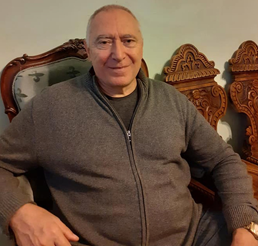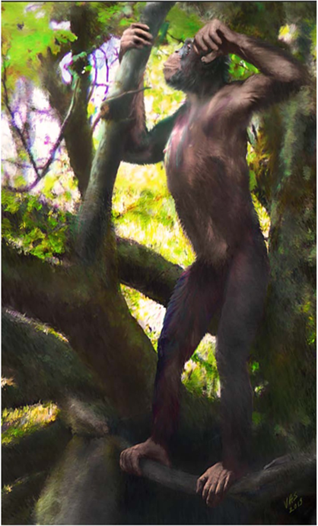The oldest hominids that walked on two legs, in the same way that humans do, lived in Europe. Evidence of this are bone remains found in the German province of Bavaria.
Prof. Nikolai Spassov, researcher from the Bulgarian Academy of Sciences, was a member of the international team which deciphered the meaning of this paleontological discovery.
 The hominid was given the name Danuvius – after the Celtic-roman river god Danuvius. The discovery of its skeletal remains changed scientific views of the early evolution of the family Hominidae, says Prof. Mikolai Spassov.
The hominid was given the name Danuvius – after the Celtic-roman river god Danuvius. The discovery of its skeletal remains changed scientific views of the early evolution of the family Hominidae, says Prof. Mikolai Spassov.
“The fossils are of an 11.6-million years old great ape - it is more than a new species, it is a new genus in science,” he says. “In the way that it moved it combines hallmarks typical of modern higher great apes like chimpanzees, gorillas and orangutans with hallmarks characteristic of human bipedalism. This means that Danuvious were able to suspend themselves from trees by their forelimbs, just like a human. We established this by the preserved long bones and knuckles of the forelimbs and hind limbs. That means that by taking a look at Danuvius, we can imagine what the last common ancestor was like – of great apes on the one hand, and the line that led to humans on the other.”
 A total of 40 bones from four individuals were found during the excavations – 2 female, 1 male and 1 youngster. The remains lead to the conclusion that Danuvius reached around 1 metre in height, the male weighed about 31 kilograms, the female – about 18. The hominid had a broad and flat chest and elongated lumbar vertebrae – similar to humans – and that enabled it to position the centre of gravity over its upright thighs as it moved on two legs.
A total of 40 bones from four individuals were found during the excavations – 2 female, 1 male and 1 youngster. The remains lead to the conclusion that Danuvius reached around 1 metre in height, the male weighed about 31 kilograms, the female – about 18. The hominid had a broad and flat chest and elongated lumbar vertebrae – similar to humans – and that enabled it to position the centre of gravity over its upright thighs as it moved on two legs.
“Out of the hundreds of mammal remains found in the field, we had to separate those bones and fragments which are from hominids,” says Prof. Nikolai Spassov about his work under Prof. Madelaine Böhme from the University of Tübingen. “And then to compare them with modern hominid fossils and imagine which part of the skeleton the fragments come from, and, what is most important – to make a functional analysis. It was this functional analysis that helped us imagine the way that Danuvius moved from place to place.”
What is essential in this case is that they are hominids from Europe, because the biggest disputes in paleontology are why humans started to walk upright, when and where it happened. The discoveries made two years ago in the Balkans also come to corroborate the theory that the answers to all of these questions lead to Europe.

“There are just two finds and they come from the Balkan Peninsula,” says Prof. Nikolai Spassov. “Graecopithecus got its name from the description of a mandible found near Athens. A tooth was also found during a dig in the town of Chirpan in Bulgaria belonging to the same genus. With the help of these finds we managed to prove that Graecopithecus is a representative of the line that leads directly to humans, as it lived 7.2 million years ago. Soon afterwards an article came out that 6 million years ago there was another biped creature living on the coast of the island of Crete.”
These human ancestors lived a little before the Australopithecus appeared in Africa. This means that by the time prehumans appeared on the Black continent, bipeds were already walking the earth in Europe. Prof. Nikolai Spassov promises more fascinating, as he puts it, discoveries, connected with the remains of the first prehumen – Graecopithecus, found near Chirpan in Bulgaria.
Photos: Diana Tsankova, private library and Reuters
Every year on February 10, the feast of St. Haralambos , Bishop of Magnesia, is celebrated with special solemnity in a small Bulgarian town in the northernmost part of the country's Black Sea coast . For Shabla and its residents, this is the..
Almost 40 years ago, Bulgarian Orthodox Church communities were established in Western and Central Europe in several cities - Budapest, Munich, Vienna, Stockholm, Malmö, Oslo and Paris. With Bulgaria's accession to the European Union and the expansion..
On February 4, Blagoevgrad will commemorate the 153rd anniversary of the birth of Bulgarian revolutionary Gotse Delchev with a wreath-laying ceremony. The ceremony will take place at 11am in front of the hero's monument on Macedonia Square. Voivode..

+359 2 9336 661
